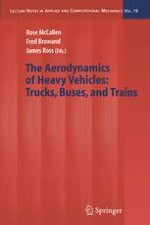It is our pleasure to present these proceedings from the United Engineering Foundation Conference on The Aerodynamics of Heavy Vehicles: Trucks, Buses and Trains held December 2-6, 2002, in Monterey, California. This Department of Energy, United Engineering Foundation, and industry sponsored conference brought together 90 leading engineering researchers from around the world to discuss the aerodynamic drag of heavy vehicles. Participants from national labs, academia, and industry, including truck manufacturers, discussed how computer simulation and experimental techniques could be used to design more fuel efficient trucks, buses, and trains. Conference topics included comparison of computational fluid dynamics calculations using both steady and unsteady Reynolds-averaged Navier-Stokes, large-eddy simulation, and hybrid turbulence models and experimental data obtained from the Department of Energy sponsored and other wind tunnel experiments. Advanced experimental techniques including three-dimensional particle image velocimetry were presented, along with their use in evaluating drag reduction devices. We would like to thank the UEF conference organizers for their dedication and quick response to sudden deadlines. In addition, we would like to thank all session chairs, the scientific advisory committee, authors, and reviewers for their many hours of dedicated effort that contributed to a successful conference and resulted in this document of the conference proceedings. We also gratefully acknowledge the support received from the United Engineering Foundation, the US Department of Energy, Lawrence Livermore National Laboratory, Volvo Trucks America, International Truck and Engine Corporation, and Freightliner LLC.
